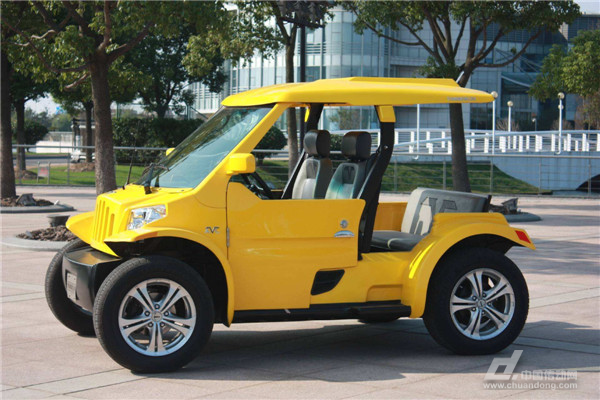
While many people remain skeptical about low-speed electric vehicles, the investment community sees a different picture. In mid-September this year, China Guangfa Capital Management and Fujian Dechi New Energy Technology held a strategic cooperation signing ceremony in Jiangle, Fujian. GF Capital will act as the lead investor and financial advisor for Dechi Motors, offering both funding and technical support. This move comes at a time when the market has seen a significant drop due to delayed national standards for low-speed electric vehicles, making the capital’s involvement a timely boost.
In an environment where many are pessimistic about the low-speed electric vehicle market and its challenging regulations, investors remain optimistic about its long-term potential. This article explores the growing interest from the investment sector and highlights some of the key players shaping this evolving industry.
Great Wall Motors and Hebei Yujie
In mid-July, Great Wall Motors announced a joint venture with Hebei Yujie Vehicle Co., Ltd. The deal involves Great Wall investing through capital increases, initially acquiring a 25% stake, which could rise to 49%. The two companies plan to launch a new brand under the “YUJIE Great Wall†trademark. Hebei Yujie, controlled by Yujie Group, has been a major player in the low-speed car market, achieving top sales for four consecutive years, with over 300,000 units sold by 2016. This partnership marks one of the largest investments in the low-speed electric vehicle sector.
Loncin Universal Holdings and Lichi Motors
As a leading company in the low-speed electric vehicle space, Lichi Motors attracted early attention from investors. In 2014, Longxin Capital invested 50 million yuan for a 20% stake, and later increased its ownership to 51%, securing control. Loncin GM emphasized the growth potential of mini four-wheeled electric vehicles, supported by provincial policies and national trends. Their confidence in the market led to further expansion into the micro-electric vehicle industry.
Levi Electric Motors and Chenyi Capital
In 2016, Levi Electric Motors was launched with independent branding, backed by Shanghai Chenxi Asset Management and Yujie Group. Chen Liang, managing partner at Chenxi, described the low-speed electric vehicle market as a “blue ocean,†noting that these vehicles continue to grow without subsidies, meeting specific consumer needs in China. This insight helped attract strong investor interest.
Car and Home Secures 6.2 Billion Yuan in Funding
Founded in 2015, Car and Home is an urban intelligent transportation service provider. They are developing two products: a compact SEV and a large SUV, with the first SEVs intended for time-sharing leasing in Paris. The company also partnered with Yihang Intelligent for autonomous driving solutions, aiming to launch Level 4 self-driving cars. In September, Car and Home raised 6.2 billion yuan in A3 round financing, led by Leo Group and other prominent investors.
Qingxing Electric Vehicles and Mins Capital
Qingxing Electric Vehicle, founded by former Tsinghua Automotive Group executives, focuses on affordable smart electric vehicles. Mins Capital led their pre-A round, with support from Real Funds and Meihua Fund. Like Car and Home, Qingxing targets lower-tier cities with lightweight, affordable models that challenge the perception of low-end vehicles as low-quality. Both companies highlight innovation and quality, appealing to investors seeking disruption in the market.
Hengyuan Automobile and International Investors
Although less well-known, Hengyuan Automobile has attracted high-profile investors such as Zhenhua Xu, Zhou Hongyi, and Foxconn’s Gou Mingming. Based in the U.S., Hengyuan produces small electric logistics vehicles tailored for urban environments. Their focus on energy efficiency and cost-effectiveness aligns with growing demand for practical, eco-friendly transport solutions.
Despite regulatory challenges, several companies like Reding, Yijia, and Tang Jun continue to attract investment. While the full impact of policy changes remains uncertain, the continued influx of capital suggests a strong belief in the future of low-speed electric vehicles.
Investors are drawn to the sector not just for profit, but for the potential to shape the future of mobility. As Warren Buffett once said, “When others are greedy, be fearful; when others are fearful, be greedy.†In a market where many are cautious, the boldness of investors may signal a shift in the landscape of electric mobility.
Spring-type terminals are new types of spring-type terminals, which have been widely used in the world's electrical and electronic engineering industries: lighting, elevator control, instrumentation, power, chemistry, and automotive power.
If the terminal block is black, one of the possibilities is not necessarily burning black, oxidation may also be black. So how to verify whether it is burnt black? The method we take is to wipe it with a finger. If it can be wiped off, like soot, it is the black substance formed by oxidation, which can only be ground off with sandpaper or a file.
Spring Terminal,Spring Push-In Terminal Block,Spring Clamp Terminal Block,Spring Terminal Block For Pcb
Sichuan Xinlian electronic science and technology Company , https://www.sztmlch.com